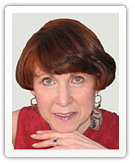Articles: Organizational Effectiveness Archives
Outdoor/Indoor Organisational Development Training
Building a Bridge
To quote management consultant David Maister: “To create a great firm, the managerial challenge is not just to reward performance where it manifests itself, but to run a system that causes performance to improve. ... to function effectively, professionals in a firm need a shared level of intensity ... many firms operate as if performance is the individual's responsibility and no one else's.”
Professionals ever more rapidly are being pushed to change the way they think and operate by clients with business goals and team management orientations that conflict with the way those professionals traditionally do things. Since team behaviors run counter to the natural bent of those who prefer independent thought and action, experienced trainers often need to be brought in to help facilitate a different, more team-directed, orientation among them.
To accomplish this, a number of firms have used team building consultants who use physically engaging outdoor activities to kick off or enhance the training. Though this has proved successful in the short term, the effects often fade over time unless the activities and lessons are translated in a second stage to those activities and tasks the professionals need to perform on a daily basis. This second stage has been missing from most Outward Bound and similar types of team building training.
The second phase or bridge, this time conducted indoors, consists of exercises which are made to relate to on-the-job situations. Some examples are: organizing a team-selling opportunity; beginning a new matter with a client – setting ground rules; or determining how to reward teamwork in rainmaking. The facilitator must be familiar with firm cultures and with the processes and interactions that typically occur in delivering their services.
To describe how this training works:
- The firm identifies a problem to solve or set of behaviors that it would like to see changed.
- With the external facilitators (the outdoor experiential trainer and Practice Development Counsel), firm managers diagnose why the problem or behaviors exist.
- Outdoor training is planned and conducted to provide analogous experiences for problem solving or behavioral change.
- A debriefing while still outdoors surfaces insights and sets out next steps.
- A meeting in the office is scheduled within a month (preferably less) of the outdoor experience. Starting with lessons learned, the barriers to change in the office are explored. With the facilitator/consultant, the firm or practice group (or other defined group) works through exercises analogous to the outdoor lessons, but specific to the problems/behaviors identified and determines a reordering of priorities to achieve goals for change.
- Years of experience with groups of all kinds have shown that new kinds of challenges in a different environment excite people and compel them to try new things. This is particularly true of high achieving professionals. Individuals, with the support of others in the group, are usually able to confront and overcome fears of physical challenges or change. Under most circumstances, people are naturally supportive, helpful and empathetic to each other. Lastly, these activities build morale and camaraderie.
© Phyllis Weiss Haserot 1995.

